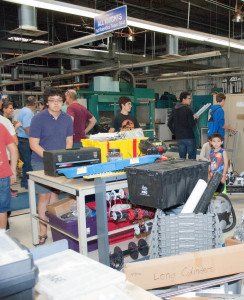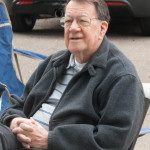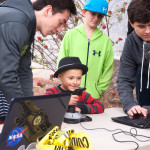
By Rachel Dinh
For several weeks, the future of the TPA Robotics team was unsure. The team didn’t have a workshop: nowhere to meet up on weekends, work on the robot, and collaborate. But thanks to Mr. Joe Salontai, chief executive officer of Morsch Machine in Chandler, the robotics season acquired a space and can launch into full swing.
Mr. Salontai says, “I first heard about the team’s dilemma when I talked to Dr. Matsumoto (one of the team’s mentors). He said he needed some space and I said I had some room. I’m an aerospace engineer from way back and I love engineering. Robotics translates into real-world stuff. So it was all a nice community effort.”
The transition to a new workshop has not been overly difficult. However, there are a few things that must be kept in mind. Mrs. DiCaro, the team’s adviser, says, “The robotics team will be working inside Morsch Machine, a functioning and profitable business that specializes in precision machining and aerospace components. Morsch will have their customers walking by our shop area, which means we have to be more conscious about keeping our work area neat and orderly. We share break room and conference rooms with Morsch employees, not just shop area for mechanical building of our robots. We need to act like employees. That will make this year feel different than last year. How the team functions will not change much. We will have to be more strict with our schedules because we have to let Morsch know ahead of time when we will be in the shop. Other than that things will be the same.”

Mr. Salontai invited the TPA community to see the new workshop through an open house on Dec. 12. Visitors were allowed to drive the practice robot named Renzo, and tour the building interior. While there, I had a chance to ask the new team members their reasons for joining. Emma Moriarty shares, “Victor Dinh is my inspiration. He succeeded in cross country and school, so I wanted to follow him in his footsteps, not only in academic and athletic endeavors, but in his extracurricular endeavors as well.”
Aimee Cheng, also new this year, strongly agrees, saying, “Same.”
So far in the four meetings they’ve attended, they’ve learned about the different specialty groups in robotics. The mechanical team physically builds the robot, the electrical team specializes in wiring, CAD (computer aided design) uses computers to design the robot components, programming uses language such as JAVA to program the robot, and pneumatics uses pneumatic systems (air-powered machines) that allow the robot to complete certain tasks.

Jacob Steineke, a long-time robotics member, shares his favorite part of robotics. “It prepares you for any STEM jobs you want to pursue in the future. It’s also very fun to compete with other teams while working alongside your friends.”
Olek Piechaczek shares his enthusiasm and adds, “My favorite part is getting to see all of your hard work pay off in the competitions. I’m looking forward to seeing how the castle theme is going to be integrated into the problem.” Olek is talking about the teaser released for the 2016 robotics challenge. On Jan. 9, the team will know their objective and start constructing their robot, which will be used to compete in state and national competitions. Right now, the team is working on getting new members up to speed and learning new mechanisms.
This season is launching off with high hopes. The goal is not just the physical trophies, but the knowledge and values that come along the way. Mrs. DiCaro adds, “If at the end of the season this team can say they learned new skills, built a solid robot to complete its task well, performed the best they can in competition, and worked well together, then we will have achieved success. But getting that trophy win would be great too!”
